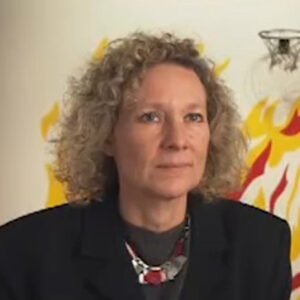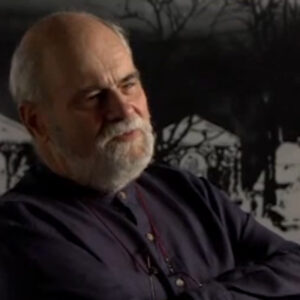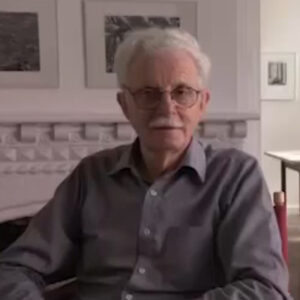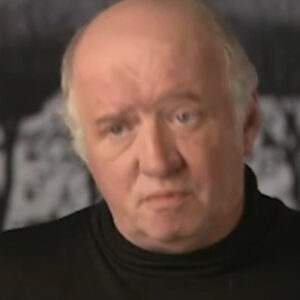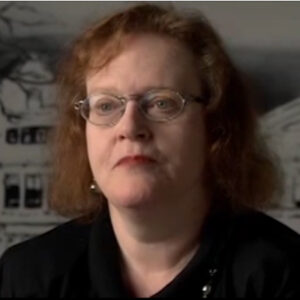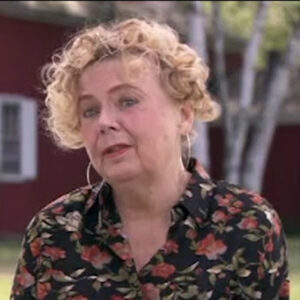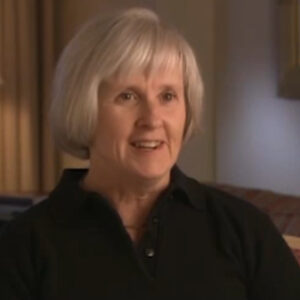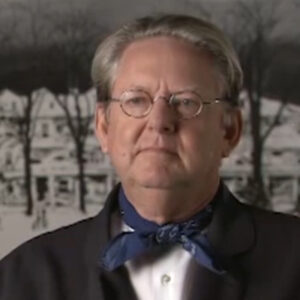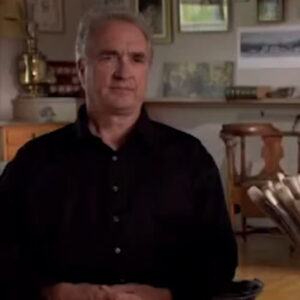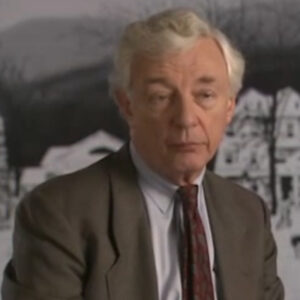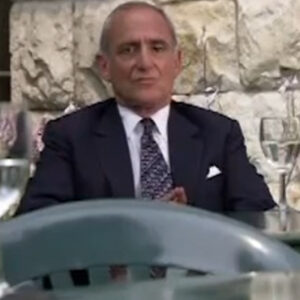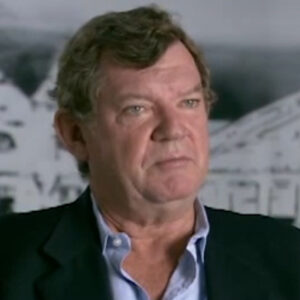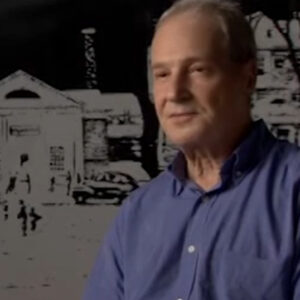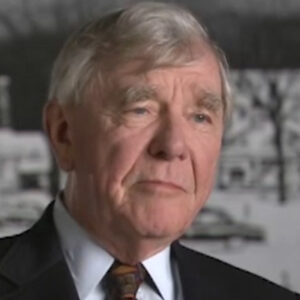Speaker Well, I wanted to start out talking really about this, the heritage of American illustration. Rockwell, when Rockwell was beginning to work, you know what heritage you had coming into his career and the golden age of illustration. Can you sort of take us back to.
Speaker Well, I think the end of the chronology of it, I’m not really sort of clear on. But I think as we just were talking, there’s a real distinction between book illustrators and magazine illustrators. And my grandfather was clearly a book illustrator and thought of himself as such. And I assume in the hierarchy of illustration, they sort of made that distinction and. And it was so interesting to me because at the time of when my grandfather’s working, so many of the writers worked integrally with the illustrators. I mean, this was the only way their work was going to be seen. The writers and set of television and so forth. So writers at that point, from what I’ve read, really, this was an integral part of their work. And so so oftentimes my grandfather, for instance, with Marjorie Rawlings, who wrote The Yearling, he went down to Florida, live with her there to see how the life and so forth. So was it was much more and so much more time was put in these illustrations. I think magazine illustration was having a just quick Emmy. These were weekly. She nocturne these things out. And so there was quite a distinction between the two. But in the first half of the century, certainly an illustration played a huge role on American. Enormous. I mean, it was the one visual medium that everybody was tuned into. As I say, their revenge films were coming along. But there was no television. And and illustration was the visual sort of vehicle in which these stories were brought to life that illuminate the stories. And so as as they call it, the golden age of illustration. These were the proponents of it and certainly NC, Wyeth.
Speaker And then I assume Norman Rockwell later came along and said that I’m starting with Howard Pyle, actually Eisenhower Wall Streeters, viewed by the public in the art role for say.
Speaker Well, that’s always been the question, of course. And it’s sort of I never knew my grandfather course. But from what I’ve read and there’s a recent book, actually a biography. And see why as he was demonized by this question of, you know, is illustration art. And it just I mean, his whole life was sort of full of this anxiety of what and and it’s it’s amazing to me because I think his best work are as illustrations. I mean, he would go out and do his easel paintings and so forth and sort of felt that this was his real art. And so when, in fact, his illustrations, I think are much more interesting, much more sort of the excitement and so forth. And so there’s always been this sort of curious distinction. Well, this is an illustration. And this is when one is illustration. I mean, illustration is by its very nature is the illumination. That’s what art is, you know. And so to me, all art really is illustration. Maybe it’s not provoked by a book or so forth. More than a thought and what not. But but I don’t I really don’t see the distinction. And I think. I mean, the charges, the wire scared my father and I and my grandfather that, well, they’ve just a bunch of illustrator’s. And I’ve really always taken this is kind of a compliment. I mean, I don’t take that as a detraction at all. But there is this strong feeling that there are two levels. And I’ve never quite seen it. I think I mean, maybe the idea of pop illustration, magazine illustration with the churn these things out and there really wasn’t much thought put in a much depth. Maybe that’s what they’re kind of the commercial artists back.
Speaker Do we get confused about. I mean, is there an issue about the role of imagination? I mean, that people think of illustration as not being a man from us?
Speaker Well, I guess that’s the sense. Is that an illustration? Illustrations born from a text. And so it’s not created by the artist mind at one. And he’s used the writer to sort of create that. But I mean, some of the greatest painters were, in fact, illustrate. I mean, Rembrandt illustrated the Bible Dagar. I think what a great Hispania is of the twin. He illustrated many of Malpas own stories, all the stories. It certainly didn’t stop them.
Speaker And it was a great American heritage tribe. Tell me about your grandfather’s relationship with Howard.
Speaker Well, Howard Pyle, as I was sort of at the time, the dean of American illustration, and he had a school in Delaware and my grandfather was born in Massachusetts. Obviously gravitated to him and felt and Pyle had the school. He didn’t charge for it. But the prospective student was sent work and he would decide whether they had a certain talent, whether he would take them free of charge for a year or a couple of years and whatnot. And so my grandfather traveled to Wilmington, Delaware, and then transferred Pennsylvania to study with Pyle, who was who was the preeminent illustrator at the time.
Speaker And.
Speaker And then went on from there pile, got them jobs and so forth, and so that was the real beginning. It was sort of a bookish thing at that time. I think Pyles illustrations are more sort of as somebody said, they remain within the book and see why as the illustration jump out of the book. I mean, they kind of jump out and grab your neck. Quite a difference between the two. What did you take from Pyle?
Speaker I remember reading or Pyle had sort of two dictums, you know, advice for his students.
Speaker Well, I think he was at the whole training, the whole approach of illustration. I think Pyle in many ways tried to reinforce with NC Wyeth. It really illustration is painting to go beyond the page, go beyond just the story. I mean, don’t don’t paint for a child or a certain age group. I mean, just get an emotion in there. And that’s what that’s where he was the great teacher apparently of these illustrators, because it wasn’t teaching illustration. It wasn’t commercial art. It was going out to the Brandywine and Chadds Ford and and living with the people and seeing how the farmers and then paid that paint. What you know, he’s told my grandfather to go west. He was interested in painting cowboys. And when I go out there and see why he did, as a young man went out and rode the Pony Express and lived that life. So all of this I mean, that’s where Pyle was this remarkable teacher. And to have an emotional relationship to the subject. Yes. Rather than working just from photographs and whatnot. And I think so much of commercial illustration is essentially that. I mean, there is such a job sort of thing that you have to get the thing done and so forth. So it sort of stops that. But I mean, I think in and Civilise case, he lived these things and Pyle encouraged.
Speaker How about Rockwell? Do you think he took any of those? I mean, I assume that he admired Pyle also.
Speaker I think he apparently he was a great admirer of Pyle Rockwells. And in fact, in some files in Rockwell’s paintings are sort of the initials of Howard Pyle and so forth. And a lot of the PIRE thing, I you know, it said it’s an interesting thing. That is one of the charges I was hit was that it was very much like Norman Rockwell. And, you know, I don’t take that as such a bad charge, although the critics loved it. Throw that in a field. And, you know, I mean, there is a distinction, I think. And Sue was working and Norman Rockwell’s work. Rockwell, who I admire a lot. I think his work. It’s very important, I think really one of the seminal paintings of this 20th century, I think, is the one of the young girl with the U.S. Marshals, the black guy. I think that’s an extraordinary painting. And so but I think a lot of his work is very sweet, very kind of almost what you say, Disneyfied. You know, it’s sort of sugar coat and whatnot, which I think puts off a lot of critics and serious motives, students of art and whatnot. But I think if you see beyond that with Rockwell’s work, I mean, there is a remarkable sort of intensity that he brought to American life that, you know, nobody else has done. I mean, he was unique to that, but quite a different thing from what NC, Wyeth and Howard Pyle did. What did your grandfather himself think about illustration? I mean, that the. Well, that was his terrible demon. He, of course, loved illustration in the very beginning. If he read this biography is quite interesting when he did.
Speaker I’m sorry. So how much?
Speaker Oh, OK. So let’s put it that way.
Speaker So I was asking you what your grandfather himself thought about illustration as well.
Speaker As I said, I think that was NC Wise Demon as they had this terrible feeling that it was not the higher ground of art, which I think is absurd.
Speaker But. And he he fought with that a lot. And I think in is when he was young. His early illustrations of Treasure Island and the wonderful series of Robert Lewis Stevenson, The Skin Scribner classics are really Tour de forces and whatnot. I think my father tells me that he finally became worn out. He took on so many jobs. He did Coca-Cola ads.
Speaker He did, you know, all sorts of stuff that he finally, just finally wore himself out just by the job after job after job. But but, you know, illustration.
Speaker I mean, these paintings that he did for treasure and he considered them, you know, they were his efforts. You know, it’s very interesting to me because I think this whole notion of a. You know, if it’s a job, it’s not art. I mean, if you’re hired to do something and to me in my life, I’ve seen some of the best work comes out of jobs.
Speaker There there is a man who sort of mentor my name, Lincoln Kriston, who started the New York City Ballet. And he he would tell me stories when he would commissioned Stravinsky to do Apollo or whatever it was. Here was his great composer and one of the great modernist composer. Stravinsky always had two questions he would ask. Lincoln, he’d say, how long do you want this and how much money am I being paid? It’s all yours. Never asked, you know, what is the mood of the ballet? What sort of feeling do you want for it?
Speaker It was a job and some of the greatest music of the 20th century came out of that. And so I you know, to me, it’s sort of a metaphor. I think this notion that, you know, if some is hired to do a painting that somehow diminishes the creativity and it went up. Well, that’s nonsense. And as I say, I think some of the best work comes out of illustration.
Speaker Yeah, I was going to say I’m a commercialism, you know. Mean, this traps for illustrators, I suppose, because they get paid for their work.
Speaker Well, it’s considered that. And I guess, you know, some illustrators where they’re under pressure all the time to work. I mean, I’ve done children’s books. I did this recent book, Cabbages and Kings, and and I loved it. I mean, you know, but I feel it’s good for me to do. I mean, you know, life of a painter, at least for me, you know, you’re pretty independent. You’ve got to push yourself, drive yourself to work sometimes. Good to have somebody over you saying, Jamie, you know, we need 14, not 13 illustrations and they have to be a certain size. You know, it was good. And I mean, the story I loved and what put then, it was real work, the drudgery of having to do this thing.
Speaker And what was most wanted from me was when I finished, then I went back to my real work and I was sort of like, God, you know, it wasn’t. But in a way, it reinforces my, you know, the other work. I think it’s it’s not bad for a painter to do. It’s good.
Speaker Going back to the Wiles and Rockwell, I don’t know if you remember that. We heard a story that sometime in New York. There was a Rockwell exhibit at the same time as there was a wild things about your father, I guess. And there was a huge line outside your father’s exhibit and nobody was coming to the Rockwell. I want to know, first of all, you remember the story at all on why you think that would have happened?
Speaker I don’t recall that, but I think always a lot of the I think the notion of connecting the wires to Norman Rockwell is the fact of the.
Speaker Accessibility. I mean, Rockwell’s work is accessible. I mean, it was used on covers of magazines, it was told a story and so forth, and. And the charge we get as painters is that we’re too accessible, that if the general public. Likes your work. It can’t be any good. I mean, that’s the notion with the sort of a lot of the sort of art, criticism, whatnot. If there’s a popular appeal, it therefore negates the work that it must be too accessible. It’s too easy to sort of understand, comprehend. And that’s the the the connection. I mean, as I say, we’re always charged with being the Norman Rockwell’s of American painting at the same time.
Speaker I mean, don’t you think your family’s work has gotten an acceptance in the art world? But Rockwell never did, really?
Speaker I think just by the sheer notion that that my father did not do, he did some magazine illustration, but not much. And I haven’t done much so far. So it’s kind of, you know, I mean, they wish there that we would do a magazine patients or they could keep us down and so forth. So there is a bit of that. And I think. Rockwell, I don’t I really don’t know much about no in terms of how much painting he did. Other than illustration. Did he paint a lot? I mean, did he do a lot of easel paintings, as they call them? I don’t think he did. And so it is.
Speaker And again, I think it goes back to this, you know, the sort of Sacranie I mean, there is a saccharin quality, the Rockwell’s work, which is a sort of uniqueness. I mean, that’s sort of fascination because it is sort of unreal world that he created. I mean, it wasn’t the 1940s at all. He created this whole thing of these little boys encounters and the grandmother with a turkey dinner and so forth. But I think they’re wonderful. I mean, they were convincing to people. I mean, here it’s somebody taking a stick with some hair in the end of it and sticking it in stuff called paint and putting on canvas. And out of that, people got a sort of a reaction from it. And I think I think it’s over. I mean, I think he was amazing. He did. I mean, it’s he’s a remarkable painter side from whether he did it for Ladies Home Journal or or Saturday Evening Post. Well, he did paint his own world completely.
Speaker You know, it’s kind of like people say, well, you know, Andrew Wyeth, I mean, he’s a real general. It’s just kind of he paints just what he sees. Well, his things are no more realistic than than, you know, Picasso’s. I mean, you know, there’s really I mean, Andrew, why his world is very so skewed and peculiar and very strange and whatnot. And I think a funny way, Norman Rockwell’s was very peculiar, although it’s much more sugar coated. I mean, it has all the sort of buzz words. Well, there is a pretty girl, there’s a cute little boy and so forth. So it’s a little more hidden. But I think as a as an effort, I think he did a remarkable job or do what’s peculiar about a. Well, because it is it isn’t the real world. I mean, you know, it’s it’s abstract as as de Kooning’s world in many ways. It’s just because, you know, there are the touchstones, whether you see it’s a real parking meter or it’s a real car and so forth. But I mean, his things. Norman Rockwell is where it can be just as strange as Kooning’s work in. It’s sort of hit isn’t the real world. It isn’t, you know, it’s something he created in his head in terms of technique.
Speaker And I’ve heard a number of things about Rockwell that it was incredible craftsmanship, that it was character lives that he took his own personality out of in terms of technique, you know, slap that. You know, there’s not a lot of texture layers.
Speaker I mean, I suppose that is a charge that you get. And I get a lot of people say he used a lot of photography.
Speaker Many photographs in his work. And there’s a funny thing in my family where they have this poor thing. This hate for photography that, you know, you cannot. And I think it’s pretty because we’re so close to photography that, you know, you don’t use it. My personal thing is, if I needed photography, I would. I just don’t happen to like it. I just feel painting is an interpretive medium. Why use another form of interpretation? I mean, why not? You know, if I’m painting a picture or what? I mean, why do I want to do it through a camera’s eyes? I’d rather do it through my sort of trepidation. Rockwell, I gather use the camera. For speed. I mean, he just wanted to do these and get these things done. I mean, people say he never really knew how to draw that. When he did sketches, there’d be stick figures and so forth. I don’t really know if that’s true. But but but again, you know, I mean, Dagar used photographs. I mean, many of his things of horses were done from my brother’s work. I mean, the moving figure, the horses running and so forth. So, you know, I mean, I guess the argument there is one becomes one is sort of an aid to getting deeper into some of the other was just kind of a crutch to sort of get it done. And so there is an argument there with that. And I think Rockwells, yes, maybe they’re not as complicated and so forth as sort of. But I don’t know, I I still think it was an effort of work that I think is quite a remarkable.
Speaker Effort. But in terms of craftsmanship, when you look at his original work site as another painter looking out. Are they well thought out or is there a lot of talk?
Speaker Yes. I mean, I think that some of them are remarkably done. Again, there’s not the sort of depth that you get. I think, again, back to the Jersey Hand magazine illustration in books, I think with NC was he had the time to really spend it to get into this thing and to get into the story.
Speaker I mean, when he talks about working on treasure and he lived and breathed, you said when he would come down, he’d be exhausted and he’d smell the gun, smoke and whatnot from a studio where the battle of raged. I mean, he totally threw himself into these things. I don’t think from what I see, Rockwell did not I mean, Rockwell went along, did the same, you know, sat there and created this stuff. It. There was there was a very interesting show a few years ago of Norman Rockwell and Howard Pyle and sort of comparing the two men. And in a curious sense, Pyle is closer to Rockwell, certainly, than Nancy. Why they were it was in terms of the type of painting. But still, there was that there was an element there that, you know, you see the piles and there was you felt life. There was sort of a conviction about what he was doing. Rockwell again, it was sort of my own little world that he applied. Everything was kind of equal. And there are this is sort of a cute thing and that sort of cute. I’m not I mean, I think that’s interesting. But but it’s you know, the pile world appealed to me more than life.
Speaker Well, but why does everybody not Norman Rockwell. Not that many Americans know Howard Pyle.
Speaker Well, true, because he is successful, you know. I mean, you saw his work. His work is constantly reproduced and calendars. There is an accessibility about this this question of, you know, when I but I think the critics are wrong. The fact that, you know, accessibility diminishes the work or diminishes the the reason the work.
Speaker I think, you know, I think it’s I mean, it’s a moot question.
Speaker I mean, he did tap into something in our national psyche, I guess, that shocked his world, that he created myopic little Norman Rockwell world, touched a button with American people. And it was the sort of nostalgic the you know, the rural life, the simpler life, the thing. But, you know, it wasn’t a real war. I don’t know. I think Norman Rockwell even really Barr was. But he had a lot of angst in his life. I’m sure in a lot of tragedy and whatnot, you know, that had been there. But he I mean, that just treats me that he created this world. I think it’s fascinating.
Speaker How do you think he’s going gonna be viewed in the future?
Speaker Well, I think his work will stand for itself. I mean, I think, as I say, I think that the one picture that I recall is the little girl walking with the U.S. Marshals and the civil rights movement. That’s a seminal pain, I think, of that whole period. I mean, I think it’s a remarkable painting, that sort of nutshells, that whole that whole era of civil rights movement or whatnot. It’s remarkable that the splattered tomatoes on the wall. Now, Rockwell, I mean, it’s worked did change at the 60s.
Speaker Somewhat from that saccharin view. Yes. Trying to capture something of the real world, I guess.
Speaker Yeah, well, it you know, it was interesting for me. I did a portrait of President Kennedy. I was asked to do. This was after he had died. And so I was 17 or 18. And so I was try to humor as much as I could. And then Mrs. Kennedy gave me a lot of the films that she’d taken. And so for that, try to establish a memory. One of the things I used or looked at was Norman Rockwell’s portrait. And. You know, again. I mean, it was look like Kennedy, it looked, but I saw there wasn’t much distinction between that and a photograph. I didn’t really feel much depth for them. Well, then I did this portrait, which, of course, horrified most people because, you know, the Kennedys have a weakness in their eye when I sort of shoots off and I thought, well, that’s part of the whole thing of them. I think it’s interesting and so forth. Well, it mortified. It was reproduced in Life magazine or Look magazine and they had letters saying, how dare he do that to the president, you know, I mean, and I had him sort of jali and whatnot. And, you know, whereas the Rockwell portrait was very popular, people hang on the walls and whatnot. It’s it’s that’s kind of turnaround away now.
Speaker The portrait of mine with the warts and all with the presidency and what people are certain think, well, maybe this is an interesting depiction of Kennedy. But I mean, again, there was a case of Rockwell’s thing where it really was based on a photograph and you didn’t get much sense of it. I mean, Kennedy obviously was an intense man. He was an Irish politician.
Speaker He may I try to get all Atami into what I did. And I don’t think Rockwell had entered his mind.
Speaker There’s another story Peter heard a portrait of Johnson Johnson threw out or something. That’s right. Said what? Which one do you like me said the wrong. Well, of course. I mean, you know, the Rockwell. And it was a much more of a passive thing. But but but again, I don’t think you can dismiss Rockwell. I mean, I think he’s sort of curious vision me. He saw these things. You can say, well, they’re just done from photographs. But yes, he he had a point of view, which is undeniable. And it’s very American. And it it means a lot to the American public.
Speaker And I think as as a consequence, it’s it’s important because Rockwell had any kind of legacy in the art world mean in any way?
Speaker Well, I think probably that that he is sort of the whipping boy, which which, you know, and my family also was sort of thrown in together and. And but at least I don’t care what, cause at least people will go look at the work because of it, whether they go to just see. Well, here’s a case of a terrible painter. I mean, this is the wrong way to approach painting or or that, you know, it’s still it keeps his work alive and that’s his legacy. And maybe it’ll be a period where all this and we’ll say, how remarkable.
Speaker I mean, it’s sort of, you know, the film noir now, I mean, is a great interest of these early 40s film, which is Taimur considered just kind of let’s get these films out there now. Filmmakers are looking at these and say, well, these are came. And she I think Rockwell would be looked at and this is a peculiar kind of view of the 40s and the 50s and whatnot. He recorded this as part of our history. Now, I think that his legacy will last.
Speaker I want to go back to the height of abstract expressionism. That was sort of the height of us against them mentality right off the rails versus modern us. I mean, can you talk about that in relation to what your family experienced in Rockwell?
Speaker My family course, during the height of abstract expressionism, more reinforce what they were doing. I mean, they felt there is a wonderful sort of things of them against us type thing. And so I think it just more empowered my father to keep working.
Speaker I mean, it just absolutely. He was alone in his field. I mean, there was Edward Hopper. There was Thomas Hart Benton, fairly payers. But but no essentially loan, which is a sort of a wonderful position to be in. And you drive a certain strength from it. Now, whether Rockwell felt that Rockwell, I think always said, I’m just an illustrator and I’m not even in that world and so forth. That was his choosing.
Speaker Yeah, I mean, that’s confusing. I mean, he did always say that this was an illustrator. But a lot of some people at least feel, you know, secretly harbored longings to be thought of as more than an illustrator.
Speaker But did I did that? I don’t know. You know, I just. Whereas I think back 10, see why. I think he’s terrible misgivings about being an illustrator and is this important work and so forth. He suffered because of it. I mean, I know my father told me when the Armory Show is in New York and the Russian expressionists were brought here. The constructionist. He was very affected by it. It changed his work. He started experimenting with things and I think kind of weakened his conviction. He starts sort of vacillating back and forth and so forth with Andrew.
Speaker I think just more reinforced what he was doing. He went even further and sort of strayed into what he was doing.
Speaker I mean, some people say Rockwell even expressed a desire, you know, said he wished he could paint like Picasso kind of experimented occasionally with modernism.
Speaker I mean, looking at his technique, I mean, do you think that, you know, if he had.
Speaker Actually pushed himself to do something other than what he was doing that he could have in terms of technique?
Speaker I don’t think so because I don’t think it’s about technique. It’s about whether it’s inside you or not. I mean, Picasso, you know, I mean, he could draw you. I mean, anatomically a figure beautifully. He just so chose to sort of abstract and what a form if it wasn’t in Rockwell’s psyche. I mean, no matter how well he painted, he couldn’t even attempt. You know, it’s just, you know, it’s what you’re your consciousness isn’t a thing of just manipulating the brush and say, well, now I’m gonna do an abstract painting today. It’s it’s just a it’s a whole perception. It’s all state of mind. It’s a whole approach to things. And they were, of course, completely opposite.
Speaker And I think if Rockwell if he’s you know, he said, well, you wish you could paint like Picasso. Well, I mean. I mean, why didn’t Emina you know, I mean, let’s see how that is.
Speaker I’m going back to your own work. I mean, just to clarify, you don’t see any line between art and illustration in terms of being able to do different jobs, different kinds of painting at different times?
Speaker No, I apply. I mean, when I did the few illustrations I’ve done, I have. I work in them the same as I work on my other painting. I mean, I make no distinction between the two. I mean, why should there be a distinction? You know, other than the time restraints, I guess most illustrators work under. But I don’t I don’t quite understand why is this sort of different, you know? Well, now I’m now I’m better think like a book, you know? I think like a magazine. Whereas now I’m doing, you know, and again, it’s back to this notion of mine, I think. I wish painters are I wish I had little more. I’m it’s good to have to work to just get to record. I mean, my interest in painting is really recording things. Imagist for some peculiar reason. I want to do it in paint rather than in words or music or whatever and and the act recording. We’re in such an age now where the painter is more interested in the work. Now you know where that’s becomes the fascination. As a consequence, you have painters who, you know, the object becomes of no import. This is totally the mind of the painter. That’s the important thing. And to me, it doesn’t appeal to me, you know, I mean, I feel if I can get as much of the art stuff out better than sort of trying to determine is this, you know, what bearing does this have on this?
Speaker And how can I you know, I find it better for myself and for the history books.
Speaker You would hope that people would. Look at illustration as part of the continuum of painting.
Speaker Oh, definitely. I mean, they’re illustrators. I mean, Rockwell Kent is another illustrator whose work I think is wonderful stuff and what not. And he sort of dismisses an illustrator now. And in fact, when you mention his name, most people think you’re talking about Norman Rockwell. Hardly anybody’s heard of him. Now in the 40s, he was the preeminent illustrator in America and he did all the major books from Moby Dick and all the things and the and. And he’s virtually unknown now. And I think a lot of I mean, I think his political thing, he got involved in communism. So that had a bearing on it. But I think largely is the fact that he’s put off as an illustrator and therefore no interest really study and look at it.
Speaker But I mean, this museum is part of him. And there’s a legacy here that you’re trying to preserve, right? I mean, not that this museum is just about illustration, but that as far as.
Speaker Yeah. Yeah. Well, well, we’re not preserving the legacy. It’s just sort of just showing the work and to see the continuum through it. How from Pile, who clearly was an illustrator, said that’s his only interest to NZ was it was an illustrated grot more of a painter’s notion to to to illustration than to my father. And to me it’s just a I think it just shows an interesting kind of progression of the thing. But illustrations, integral part of it and and drives a lot of the work. I mean, there’s a certain storytelling aspect to our paintings. Well, what’s wrong with that? You know, I mean, I think I mean, what’s wrong with storytelling? I mean, some I mean, books today are fine. I mean, almost the art of storytelling has disappeared. You know?
Speaker I mean, I don’t find that a bad charge to be saying, well, they’re just storytellers, you know? Well, I think that’s a compliment. Rockwell was a storyteller. Did it through his work. Yes, it was magazines sort of things. Well, who cares? I mean, it’s a cold a sort of skewered point of view that, you know, some people don’t like. But it’s it’s a statement.


